#Bletchley Park codebreaking
Explore tagged Tumblr posts
Text
The Secret Labs of WWII: Innovations in Warfare
World War II was a conflict fought on battlefields, in the skies, and across the oceans. But it was also a war fought in the shadows, in laboratories hidden away from prying eyes, where brilliant minds raced against time to develop technologies that could turn the tide of the conflict. These “secret labs” were hotbeds of innovation, where scientists, engineers, and researchers worked on projects…
#Allied secret weapons#Axis secret technology#biological warfare WWII#Blackwood war history#Bletchley Park codebreaking#cryptology WWII#Dora-Mittelbau factory#ethical implications of wartime research#hidden wartime science#Manhattan Project locations#military R&D WWII#MIT Rad Lab#nuclear weapons development#OSS spy gadgets#Peenemünde rocket development#Porton Down research#radar technology WWII#SOE workshops#top secret facilities#underground factories WWII#Unit 731 experiments#V-2 rocket history#wartime scientific innovation#WWII Secret Labs. Secondary and long-tail keywords: World War 2 secret research
0 notes
Text
4 notes
·
View notes
Text

"It's loss that brought me to Rapture. The loss of my wife, Pearl... The Thinker is all I've got, now..."
With an advance degree in Mathematics from one of the first U.S. universities to grant degrees to black students, Porter was chosen by Alan Turing for his WWII codebreaking team at Bletchley Park. During his time there, however, he suffered a terrible loss, and when the war ended he allowed himself to be recruited by Andrew Ryan. Porter came to Rapture to build and operate the most advanced mainframe computer the world had ever seen, used to run all the computerized and automated technology in the city.
Porter had been absent from his former post for some time, but now he has decided to flee Rapture with a copy of the The Thinker, his masterpiece.
#charles milton porter#cm porter#the thinker#rapture#andrew ryan#alan turing#ww2#codebreaking#bletchley park#husband wife#bonded pair#advance#computer#computerized#machine#minerva's den#bioshock#bioshock 2#bioshock 2 dlc#bioshock the collection#bioshock: the collection#2K#video games#girls who game#nintendo#nintendo switch#nintendo switch games#switch#switch games
2 notes
·
View notes
Text

we're genuinely just writing anything now
#bletchley park with dragons is making me tear up laughing#i don't think they were even codebreaking in bletchley park in 1923??????
3 notes
·
View notes
Text
Weekly output: Musk digitally deleting USAID, Arm vs. Qualcomm, U.K. vs. Apple, 8K TV, Bletchley Park
One of this week’s published stories began with reporting weeks ago; another began with notes and photos taken months ago. 2/3/2025: Musk’s Minions Deleting Digital Presence of US International Development Agency, PCMag I could not just write about the weird digital erasure Elon Musk and his goons have been inflicting on the online presence of the U.S. Agency for International Development without…

View On WordPress
#8K#8K TV#Agency for International Development#Arm Holdings#Bletchley Park#codebreaking#cryptography#Enigma machine#iCloud encryption#Investigatory Powers Act#Musk coup#Qualcomm#Snapdragon X#Snoopers&039; Charter#U.K. Home Office#USAID
0 notes
Text

Alan Mathison Turing
Alan Turing was was an English mathematician, computer scientist, logician, cryptanalyst, philosopher and theoretical biologist and is widely considered to be the father of theoretical computer science. During the Second World War, Turing worked for the Government Code and Cypher School at Bletchley Park, Britain's codebreaking centre that produced Ultra intelligence. He led Hut 8, the section responsible for German naval cryptanalysis. He devised techniques for speeding the breaking of German ciphers, including improvements to the pre-war Polish bomba method, an electromechanical machine that could find settings for the Enigma machine. Turing played a crucial role in cracking intercepted messages that enabled the Allies to defeat the Axis powers in many crucial engagements, including the Battle of the Atlantic. in 1952 when Turing was 39, he began a relationship with Arnold Murray, a 19 year old unemployed man. In January of 1952, Turings house was burgled, and Murray told Turing that he and the burglar were acquainted, and Turing called the police to report the crime. During the investigation, he acknowledged a sexual relationship with Murray and both men were charged with "gross indecency" under Section 11 of the Criminal Law Amendment Act 1885. On the advice of his family and lawyer he pled guilty. In March of 1952 he was convicted and given a choice between imprisonment or probation with the condition that he undergo a hormonal treatment to reduce libido, aka as "chemical castration". Turing opted for probation and began the chemical treatments. Over the course of the following year he was injected with estrogen, causing impotence and for breast tissue to form. In a letter, Turing wrote that "no doubt I shall emerge from it all a different man, but quite who I've not found out".
On 8 June 1954, at his house at 43 Adlington Road, Wilmslow, Turing's housekeeper found him dead. A post mortem was held that evening which determined that he had died the previous day at the age of 41 with cyanide poisoning cited as the cause of death. When his body was discovered, an apple lay half-eaten beside his bed, and although the apple was not tested for cyanide, it was speculated that this was the means by which Turing had consumed a fatal dose. Many question whether his death was suicide or accidental but it is officially listed as suicide. In 2013, Queen Elizabeth II signed a pardon for Turings conviction of "gross indencency", with immediate effect. The Queen officially pronounced Turing pardoned in August 2014. The Queen's action is only the fourth royal pardon granted since the conclusion of the Second World War. Pardons are normally granted only when the person is technically innocent, and a request has been made by the family or other interested party; neither condition was met in regard to Turing's conviction. In September 2016, the government announced its intention to expand this retroactive exoneration to other men convicted of similar historical indecency offences, in what was described as an "Alan Turing law". The Alan Turing law is now an informal term for the law in the United Kingdom, contained in the Policing and Crime Act 2017, which serves as an amnesty law to retroactively pardon men who were cautioned or convicted under historical legislation that outlawed homosexual acts. The law applies in England and Wales.
475 notes
·
View notes
Text


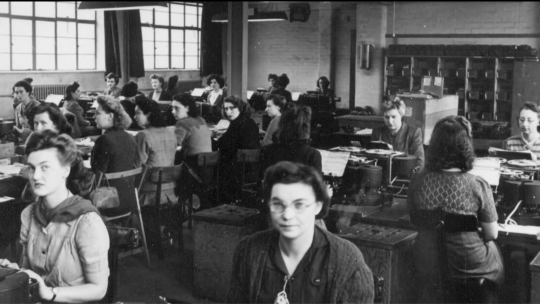

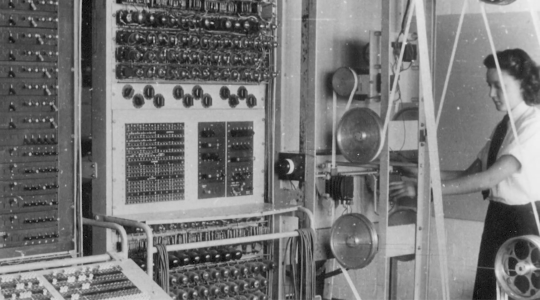


This is your finest hour
Today is the 80th anniversary of VE (Victory in Europe) Day.
I thought it would be fitting to hear the reading Matthew Goode did on the 75th anniversary at the request of Bletchley Park*, the principal allied code-breaking centre during WWII.
Matthew reads a memo from Bletchely Park's Director General on VE Day 1945 thanking the codebreakers and staff for their contribution in helping to win the war. He states that he wants the staff to know of his "unbounded admiration in the way in which they have carried out their allotted tasks". The memo ends with the sentence "This is your finest hour".
Matthew's reading is truly beautiful and a fitting tribute.
He then reads another letter - I recommend listening to the whole thing, link below.
* Note: The codebreakers of Bletchley made a massive contribution to the war effort, but, sworn to secrecy, they were forbidden to talk about their incredible work. This was chronicled in the film The Imitation Game, which told the story of Alan Turing, who created a machine that helped break the enigma code. This had a profound impact on the outcome of the war, saving millions of lifes. Sadly, Alan Turing was subsequently persecuted for being gay and it took years for his legacy to be recognised. Matthew portrayed Turing's colleague Hugh Alexander.
📷 My edit from @bletchleyparkuk YouTube video VE Day 75 - Imitation Game Matthew Goode reads a special message (8 May 2020)
youtube
38 notes
·
View notes
Text
hazel wong is so insane because wdym she’s oxford accepted, a detective, a spy and a bletchley park codebreaker all at the age of 19!!
37 notes
·
View notes
Text
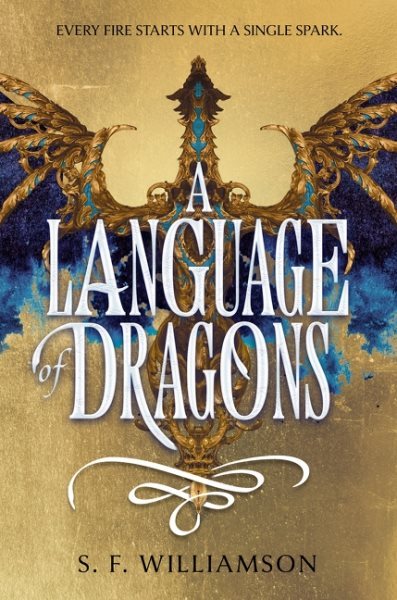
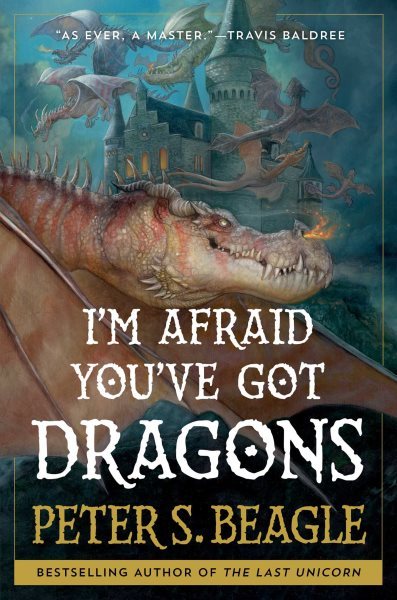

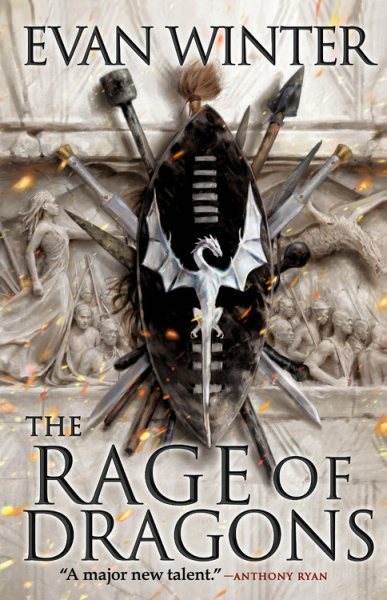
Take Wing! Dragon-Inspired Sci-Fi Picks
Take wing with these dragon-inspired reading recommendations!
A Language of Dragons by S.F. Williamson
London, 1923. Dragons soar through the skies and protests erupt on the streets, but Vivian isn’t worried. She’s going to follow the rules, study dragon languages, and protect her little sister. By midnight, however, Viv has started a civil war. So when a lifeline is offered in the form of a mysterious ‘job’, she grabs it. Arriving at Bletchley Park, Viv discovers that she has been recruited as a codebreaker helping the war effort.
I'm Afraid You've Got Dragons by Peter S. Beagle
Dragons are common in the backwater kingdom of Bellemontagne. Gaius Aurelius Constantine Heliogabalus Thrax (who would much rather people call him Robert) has recently inherited his deceased father's job as a dragon exterminator, a career he detests with all his heart. Things turn from bad to worse when Robert is hired by the royal family to disinfest the entire castle.
When Women Were Dragons by Kelly Barnhill
Alex Green is a young girl in a world much like ours, except for its most seminal event: the Mass Dragoning of 1955, when hundreds of thousands of ordinary wives and mothers sprouted wings, scales, and talons; left a trail of fiery destruction in their path; and took to the skies. Was it their choice? Why did Alex’s beloved aunt Marla transform but her mother did not? Alex must face the consequences of this astonishing event.
The Rage of Dragons by Evan Winter
The Omehi people have been fighting an unwinnable fight for almost 200 years. Their society has been built around war and only war. The lucky ones are born gifted. One in every 2,000 women has the power to call down dragons, while one in every 100 men is able to transform himself into a stronger killing machine. Everyone else is fodder, destined to fight and die. Young, gift-less Tau knows all this, but when those closest to him are brutally murdered, he dedicates himself to an unthinkable path, fixated on revenge.
This is the first volume of the "Burning" series.
#fantasy#dragon fantasy#sci fi#reading recommendations#reading recs#book recommendations#book recs#library books#tbr#tbr list#to read#booklr#book tumblr#book blog#readers advisory
11 notes
·
View notes
Text

We've all heard that early computers took up a whole room, but there are very few remaining examples of these gigantic beasts, and even fewer that are still working that you can go see.
Colossus is one such example, this machine was originally built in 1943 to break German cipher codes and was painstakingly restored to operation over a 15 year period starting in 1993.
To celebrate the achievement, the National Museum of Computing in Bletchley Park UK where Colossus resides held a contest pitting amateur radio codebreakers worldwide against Colossus, to break a set of period-authentic encrypted messages transmitted by shortwave radio from the Heinz Nixdorf museum in Paderborn, Germany.
The winner was a hobbyist with a specialized program running on a 1.2Ghz laptop, who was able to crack the code in less than a minute, 240 times faster than what Colossus was capable of.
He noted however that if you do the math, Colossus would compare to a similar modern processor running at 5.8Mhz, which is a remarkable amount of computing power for a 1944 computer, albeit one only capable of running very specialized programs.
373 notes
·
View notes
Text

Gwen Watkins
Codebreaker at Bletchley Park during the second world war who went on to become a successful author
Gwen Watkins, who has died aged 101, deciphered German air force codes at Bletchley Park during the second world war, helping RAF and US Army air force fighter aircraft to combat Luftwaffe bombers, and allied reconnaissance aircraft and bombers to evade German air defences.
Watkins joined the Women’s Auxiliary Air Force in 1941 and in May the following year was sent to Bletchley Park, the allied codebreaking centre in Buckinghamshire, as a result of her fluency in German. She was put to work in the air section, unravelling the Luftwaffe’s three-letter and three-figure enciphered codes, initially in Hut 10 and then, from early 1943, in Block F, one of a number of new concrete units that replaced the old huts.
The way in which the cipher was stripped off and the codes decoded was well established by the time Watkins joined the section. She worked on low-level messages that were designed for air crew to swiftly encode and decode, rather than the higher level communications that were protected by Enigma grade encryption. Nonetheless, thanks to the pencil and paper codebreaking techniques that she and her colleagues used, the section was able to build up a picture of how the German pilots and air defences operated.

Bill Bonsall, who headed the German sub-section in which Watkins worked, recalled that at the end of the war, commenting on the number of enemy aircraft destroyed as a result of Bletchley’s intelligence, allied air chiefs described the figures as “impressive” but said that by far the most important contribution the codebreakers made was “the saving of allied pilots’ lives which resulted from constant awareness and frequent foreknowledge of the enemy’s activities”.
Watkins was born in West Bromwich in the West Midlands. Her father, Alfred Davies, worked for the British Legion, and her mother, Harriet (also nee Davies), was a housewife.
After a family move to Bournemouth, she went to Talbot Heath school, where one of her teachers insisted she learn a fresh poem every week. “Soon I found that I could repeat hundreds of poems and hymns, as well as long speeches from Shakespeare,” she recalled. She also showed a natural affinity with the German language, reaching a high standard very quickly, reading Goethe and Schiller extensively, learning Schumann’s Dichterliebe by heart and consigning a large repertoire of German songs to memory.
She was 18 when she went to Bletchley Park. She recalled that as a result of the tight security around the centre, she was told to report to the RAF signals base at Chicksands Priory in Bedfordshire, unaware of her real destination. On arrival at Chicksands, she was surprised to be told that she would not be working there. “The sergeant asked a driver, ‘Are you going to blindfold her, or take her in the covered van?’,” she recalled. It was not, as she initially imagined, a joke. “I sat in the back of the van, separated from the driver by a sheet of hardboard and with the windows blacked out.”
When they eventually got to Bletchley Park, she showed her papers to the guard on the gate, who tried to turn her away. “I was by this time hungry, thirsty and very annoyed. ‘Look,’ I said, ‘I don’t know where I am, and I don’t know what I’m supposed to do.’ ‘[You’ve] come to the right place, then,’ said the guard, ‘most of them here look as if they don’t know where they are, and God knows what they’re doing.’”
While at Bletchley Gwen fell in love with one of her colleagues, the Welsh poet Vernon Watkins, and they were married in 1944.
After the war they moved to a bungalow on the cliffs of the Gower peninsula where Vernon had been raised, and where they were regularly visited by TS Eliot, Philip Larkin and Dylan Thomas. Thomas was supposed to have been best man at their wedding but failed to turn up.
Vernon worked at Lloyds Bank in Swansea by day and wrote poetry at night, and over the next 20 years the couple had five children. It was an idyllic life; one that was captured in a 1966 BBC documentary, Under a Bright Heaven.
In 1964 Vernon took up a visiting professorship in poetry at the University of Washington in Seattle. But in 1967, at a time when he was being cited as a potential poet laureate, he died of a heart attack while playing tennis.
Such was Gwen’s knowledge of poetry that she was able to take over his teaching duties for the remainder of the Washington university term. But she then returned to the UK, where she took a degree course in English literature at the University of Reading and moved back to the Gower.
Subsequently she wrote a number of books on literary figures, including Portrait of a Friend (1983), which examined Vernon’s collaborations with Thomas, and Dickens in Search of Himself (1987), which looked at the recurrent psychological themes in his novels. She was also co-author, with Ruth Pryor and Gordon Claridge, of Sounds from the Bell Jar – Ten Psychotic Authors (1990), an exploration of the association between creativity and psychosis viewed through the works of writers such as Margery Kempe, Thomas Hoccleve, Virginia Woolf, Antonia White and Sylvia Plath.
Watkins had met Pryor, an Englishwoman and lecturer in old English, at the University of Washington. Not long after Vernon’s death they began a long friendship and working collaboration that led to the posthumous publication of some of Vernon’s poetry, including Elegy for the Latest Dead (1977).
In 2006 Watkins published Cracking the Luftwaffe Codes: The Secrets of Bletchley Park. “To work in Bletchley Park had been an unforgettable experience,” she wrote. “Words cannot express the combined brilliance. Perhaps if all its personnel had been kept together after the war to consider the problems of world peace and universal prosperity, they might have cracked those problems too.”
She is survived by three sons, Gareth, Dylan and Conrad. Another son, Tristran, died in 1992, and a daughter, Rhiannon, 10 days before her.
🔔 Gwendoline Mary Watkins, codebreaker and author, born 31 December 1923; died 14 January 2025
Daily inspiration. Discover more photos at Just for Books…?
12 notes
·
View notes
Text

23rd June 1912 - Alan Turing was born in Maida Vale, London.
The scientific genius, matematician and codebreaker famously worked at Bletchley Park during WWII. His Turing Machine was the forerunner of the modern programmable computer.
His work was not recognised during his short lifetime... appaently, because of The Official Secrets Act. More likely it was because he was a homosexual, who was convicted of "gross indecency" in 1952.
Alan opted for chemical castration, rather than imprisonment. Less than two years later he committed suicide.
After a long and hard fought campaign, HM The Queen granted Alan Turing a Pardon in 2014. His face is now on the UK's £50 banknotes.
40 notes
·
View notes
Text

Are you aware that the British mathematician Alan Turing (1912-1954) is the father of the computer? Not everybody is but more and more people are since the British government declassified the Enigma files in the nineties. (In the movie “The Imitation Game” (2014), Benedict Cumberbatch played his character.)
I watched this documentary on Turing, much of it filmed on site at Bletchley Park. A former operator of the “Bombe” machines shows how Turing’s code-breaking machine worked.
The Allied Armies invaded Normandy on June 6 1944 because two prerequisite conditions were fulfilled: an unprecedented buildup of soldiers, arms, ammunition, fuel, food and material in England and a successful execution of operation “Fortitude”, an intelligence program that misled the Germans into thinking an invasion would happen more to the north, in the Calais area.
Eisenhower’s staff knew that the Calais deception worked because Turing had broken the code that the German high command used. And they built up a lethal force on the south coast of England because the convoys of merchant ships coming in from America were able to survive the relentless U-boat attacks in the north Atlantic Ocean (the “Battle of the Atlantic”) once Turing had broken the Enigma code.
And thus 165,000 men and 20,000 vehicles landed on the coast of Normandy in a single day. By the end of the month, 1 million soldiers had crossed the North Sea to join the beachhead.
After Enigma, Turing cracked another German code machine, the Lorenz, called “Tunny” by the Brits, in a few weeks. This more sophisticated device converted plain German text directly into a binary, encoded radio signal and was exclusively used by Hitler’s staff and generals. (Enigma messages were transmitted as Morse code once they were encrypted.)
Turing again wanted to mechanize the codebreaking but it would involve 2,000 valves. As valves were then unreliable and no machine with more than, say, 30 valves had ever been built, the army refused the funding that late in the war. The engineer Tommy Flowers built the “Colossus” anyway in his personal laboratory…
The general thinking is that Turing’s contribution shortened World War II by two years. Amongst other things, that meant no atom bomb was dropped on Berlin.
Not that Turing knew about the plans for D-Day, compartmentalized secrecy being the order of the day. He learned about it over the radio as everybody else. Still, by that time, Bletchley Park had gone from 30 code breakers in the Victorian mansion to a 9,000-men operation spread across huts quickly built around the mansion.
And yet, it’s fair to assume he came to work that day on his bicycle wearing a gas mask. Not because he feared a chemical counterattack but because that’s how he fought hay fever during the summer.
But you may wonder why the British state kept a tight lid on Bletchley Park and the codebreaking effort once the war was over. This happened because the Russian army stole Tunny machines as it swept through Germany. They reconfigured them a bit to handle the Russian language with its Cyrillic script but otherwise used them without reservations. As a result, during the first years of the Cold War, the West listened in on Stalin’s conversations with the Russian army.
Economically, the strict secrecy was a unfortunate move. Great Britain did not develop an IT industry after World War II. Over time, valves got replaced by transistors and Silicon Valley became the center of the IT world after Vannevar Bush, a veteran of the Manhattan Project, laid the groundwork. (Matthew Modine played him In Christopher Nolan’s movie Oppenheimer” (2023).)
Turing died in 1954 at the age of 43. Strangely, in this documentary, Professor of Philosophy (read: Logic) and Turing biographer Jack Copeland doubts the traditional hypothesis - suicide. Still, he was found dead on his bed with cyanide in his body and a half-eaten apple on his nightstand. Where did the cyanide come from if the apple wasn’t laced with it…?
#alan turing#turing#turing machine#computers#encryption#cryptology#code breaking#code breakers#benedict cumberbatch#the imitation game#world war#world war II#world war 2#world war two#vannevar bush#silicon valley
4 notes
·
View notes
Text
Alan Turing and WW2 Codebreaking
Considering his birthday was a couple of days ago (June 23, 1912), I'd like to do a post about the father of modern computer science himself, Alan Turing! As an openly gay man in the 1950s, he is an absolute queer icon! (In my humble opinion)
Specifically, he was at the forefront of the idea of computer memory. Using his extensive knowledge of math he published a paper called "On Computable Numebrs" (Linked below) where he discussed the idea that someday computers may be able to solve the same problems that a human could. This document has been referred to as the founding document for the computer age and has been vital in getting computers to the level they're at now.
Later in his life he played a key role in WW2 on the side of the Allies. He worked in Britain's secret headquarters for codebreaking known as Bletchley Park. In this facility he was essential, some estimates say his work alone cut the war down by at least 2 years aswell as saving millions of lives! During his time there he built a machine known as the Bombe, a revolutionary codebreaking device that was an update to an earlier Polish model. With this device codebreakers could solve up to 4 thousand messages a day.
His greatest work by far was the cracking of the Enigma, a device used by Germany to encode secret messages. Without the correct cipher (which was changed daily) it seemed nearly impossible but Turing managed to crack the code and help steer Allied ships away from German attacks.
There's a LOT more to the life of Alan Turing, and I absolutely want to talk about it all in future posts, but I wanted to focus on his achievements for an introduction.

Alan Turing, 1936
#history facts#historian#history#queer history#alan turing#turing#computer#computer science#comp sci#gay history#gay#lgbt#lgbtq
16 notes
·
View notes
Text
Inspiration for anyone writing fic about Garak, Cardassia & the Obsidian Order!
Please feel free to add your own suggestions in reblogs, tags and replies!
Cambridge Spies (2003) Mini-series about the Cambridge Five, a cell of Soviet agents in Britain. It starts in the 30s and goes all the way up to the 50s, and explores themes of loyalty, queerness and friendship. At the centre of it all is the conflicts between the characters’ values, what they are asked to do and the lives they want to live.
Enigma by Robert Harris (1995) Novel. Two codebreakers solve a mystery at Bletchley Park, with far-reaching implications. A really atmospheric book with really interesting characters, including some really subtle and neat queer stuff. (There is a film adaptation, but I don't think anywhere near as good as the novel.)
The Hour (2011-2012) TV show about a tenacious TV reporter who helps to launch a new kind of news show, but who then gets dragged into a spy mystery, turning him into an amateur detective. 1950s Britain, Cold War paranoia, class divisions and state censorship.
The Game (2014) Mini-series about a group of MI5 agents who are trying to find a mole in their group. A spy thriller where you’re not sure who you can trust, set in a very bleak 1970s Britain.
39 notes
·
View notes
Text
This day in history

TOMORROW (May 14), I'm on a livecast about AI AND ENSHITTIFICATION with TIM O'REILLY; on WEDNESDAY (May 15), I'm in NORTH HOLLYWOOD with HARRY SHEARER for a screening of STEPHANIE KELTON'S FINDING THE MONEY; FRIDAY (May 17), I'm at the INTERNET ARCHIVE in SAN FRANCISCO to keynote the 10th anniversary of the AUTHORS ALLIANCE.

#20yrsago Open source games from 1978 https://www.atariarchives.org/basicgames/
#15yrsago Why RIAA lawsuits matter to the Free Software Foundation https://torrentfreak.com/the-war-on-sharing-why-the-fsf-cares-about-riaa-lawsuits-090513/
#10yrsago Clapper’s ban on talking about leaks makes life difficult for crypto profs with cleared students https://twitter.com/mattblaze/status/464841668391624705
#10yrsago Ukip councillor sends cops to activist’s house, ask him to delete critical tweet https://www.theguardian.com/politics/2014/may/12/police-ask-blogger-remove-legitimate-tweet-ukip
#10yrsago Bletchley Park Trust erects “Berlin Wall” to cut off on-site computer history museum https://www.theguardian.com/technology/2014/may/12/bletchley-park-national-museum-computing-berlin-wall-restored-colossus-codebreaking
#5yrsago Vancouver’s housing bubble was driven by billions in laundered criminal proceeds https://www.seattletimes.com/business/billions-in-dirty-cash-helped-fuel-vancouver-b-c-s-housing-boom/
#5yrsago Supreme Court greenlights Apple customers’ lawsuit over App Store price-fixing https://www.wired.com/story/supreme-court-apple-decision-antitrust/
#5yrsago Amazon’s monopsony power: the other antitrust white meat https://www.promarket.org/2019/02/15/is-amazon-violating-the-sherman-act/
#5yrsago Trump supporters astonished to learn that the man they gave $20m to “build the wall” has nothing to show for it https://www.washingtonpost.com/nation/2019/05/11/group-raised-more-than-million-build-wall-now-some-supporters-want-answers/
#1yrsago Revenge of the Linkdumps https://pluralistic.net/2023/05/13/four-bar-linkage/#linkspittle
10 notes
·
View notes